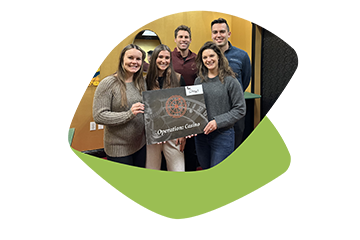Cultivating a Thriving Culture

With professional burnout at an all-time high, fostering a positive and joyful work environment is not a luxury — it's a necessity for both employees and employers. In October, I wrote about how HealthSource Solutions has made Happiness a key metric within our organization. To expand on this topic, below are six core competencies for creating a thriving atmosphere in your organization.
Cultivate a Culture of Appreciation
One of the fundamental pillars of workplace happiness is a culture of appreciation. Employees who feel valued and recognized for their contributions are more likely to be engaged and satisfied. Encourage a culture where achievements, both big and small, are acknowledged. A culture where appreciation and gratitude are overstated. And where managers lead by creating a culture of goodness. This not only boosts productivity, but also creates a positive feedback loop that enhances overall workplace happiness. What tools do you use to recognize your employees on a regular basis?
Here are a few ideas from our customers that stretch beyond the norm:
- A Gratitude Board. Hung in a high traffic area where employees can call out and recognize each other
- The <Company name> Difference. Each month at an all staff business line meeting, a colleague or team is recognized for the “difference” they are making. They are aligned with the company values.
- Thank-you cards. On a quarterly basis, every manager is highly encouraged to write a note of appreciation to each of their employees
- Bountiful Basket. Monthly, employee shout outs are collected from clients/patrons and dropped into a basket for a monthly drawing in which the employee gets to donate to a charity of their choice.
Empowerment Through Leadership
Effective leadership plays a pivotal role in shaping workplace happiness. Leaders should inspire and empower their teams, providing guidance without micromanaging. A transparent and approachable leadership style fosters trust, enabling employees to thrive in their roles. Encourage leaders to focus on the four “ates:”
- Communicate. Paint a vision, be a change agent, influence and motivate, promote a positive culture
- Allocate. Ensure there is adequate resources – staff, time, money, space, programs
- Delegate. Drive expectations, department buy-in, mid-management support, supportive policies
- Participate. Be visible, join in, model behaviors, recognize success, have FUN!
Foster Work-Life Balance
In the age of remote work and constant connectivity, maintaining a healthy work-life balance for remote and hybrid staff is crucial. Encourage boundaries by having each staff set standard hours, with a set start and stop time. As a team, commit to one another that you will honor the times.
Often, manufacturing and construction staff don’t have the same flexibility with personal and family schedules. Do you have a flex-time policy that allows these workers the ability to attend to personal and family commitments without having to take time off?
Most impactful is to discourage a culture of “face time” — if you are at work, you must be highly productive. Employees who feel they have the time and flexibility to blend work and personal life are more likely to be content and productive.
Provide Opportunities for Growth
Employees thrive when they have opportunities for professional development and growth. Offer training programs, mentorship opportunities, and career advancement paths. Having staff present can be a wonderful way to create leadership qualities and sound presenting skills. When individuals see a future within the organization and feel supported in their career journey, they are more likely to find fulfillment in their work.
“Sharing Our Strengths” is a favorite client program that was developed to drive connection and share information amongst peers. This 100% employee-driven program was part of a staff development curriculum. Employees submitted an area of interest, and monthly topics were chosen. Topics covered the gamut: Power Cleaning 101, Wood Working Basics, Cataloguing Photos, Knitting Mittens, Excel for Dummies, and Polishing your Presenting...the program is still going strong after ten years, and they have never run out of topics!
Foster Strong Relationships
Isolation has become a pandemic from the pandemic. Fostering healthy relationships among colleagues creates a crucial support network and drives a collaborative work environment. Companies need to have focused initiatives that are both formal and informal to network and connect staff.
Ideas include gardening clubs, wine tasting, speed networking with colleagues, company zoom breaks (stretching or deep breathing), monthly coffee chats, the list is endless. Offer a variety of topics, ways to connect, and different times. The goal is to offer variety for maximum reach.
All these will open communication channels and create a sense of camaraderie. When employees feel connected to their peers and supervisors, it not only enhances workplace happiness but also improves teamwork and productivity.
Emphasize a Sense of Purpose
Employees find deeper satisfaction in their work when they understand and resonate with the organization's mission and values. Regularly communicate the company’s mission and purpose and how each individual contributes to the organization's larger goals. This sense of purpose can instill a greater sense of pride and fulfillment in the work being done.
Your Happiness Goal can be Achieved!
In conclusion, workplace happiness is not an elusive concept but a tangible goal that can be achieved through deliberate actions and a commitment to fostering a positive environment. By prioritizing appreciation, work-life balance, growth opportunities, strong relationships, and a sense of purpose, organizations can create a workplace where employees thrive, leading to increased productivity and retention.



